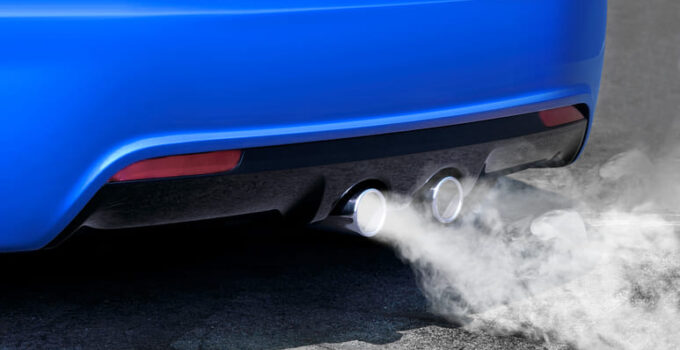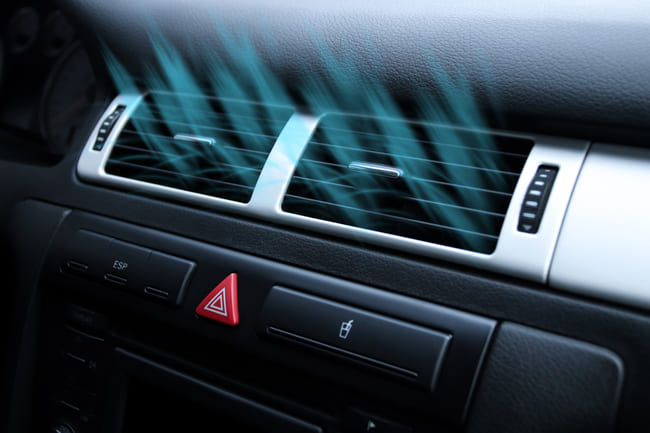
Not only since Greta Thunberg's environmental demonstrations has it been clear that we need to reduce our CO2 emissions. Even if the transport sector in The United Kingdom only accounts for a small proportion of the total CO2 emissions, we should try to minimize them. In particular, because vehicles with internal combustion engines naturally produce a whole series of other harmful exhaust gases.
Contents
What are the CO2 emissions from a car. Where do the CO2 emissions come from

CO2 is a gaseous end product of combustion. Since most vehicles today still have an internal combustion engine (usually powered by diesel or petrol), most cars also emit CO2. This is caused by the complete combustion of the long-chain hydrocarbons in the fuel. However, since other compounds or compounds with other elements, such as nitrogen or sulphur, are also present in petrol and diesel, there are other emissions in addition to CO2. These include sulfur oxides and nitrogen oxides. With the help of modern catalytic converter technologies, however, the latter emissions are being reduced further and further. This also applies to very modern diesel vehicles, which also emit very few other emissions with the help of the AdBlue additive.
However, the problem with carbon dioxide, as CO2 is also known, is that it can hardly be bound in vehicles or modified in such a way that it is no longer emitted. It therefore escapes into the air through the exhaust pipe, as does the water produced. CO2 is an important greenhouse gas that can lead to an increase in the greenhouse effect in the atmosphere. The thermal radiation from the sun leads to an increasing warming of the earth's atmosphere, because the CO2 prevents the excess heat from being released back into space. For this reason, it is important to reduce the CO2 emissions of your car as much as possible.
What causes the greatest CO2 emissions. What does CO2 emissions depend on
If you compare the amounts of CO2 that are released on different trips, you come to some amazing conclusions. For example, the CO2 emissions of an average car used in one year correspond to a two-week holiday in Mallorca. Of course, the largest part is due to the journey by plane, which releases a lot of CO2 per kilometer, which cannot be compensated for by the large number of people transported.
Of course, when driving a car, the engine causes the greatest CO2 emissions. Other systems only generate higher CO2 emissions indirectly because they are supplied with energy by the engine. This is done either via the alternator and the vehicle electrical system or via a direct drive. In summer, the built-in air conditioning is one of the biggest energy consumers.

In general, significant amounts of pollutants are emitted whenever the engine is cold started. There are studies that show the emissions in the first half minute after starting the engine at 300Compare kilometers driven (warm engine). This is due in particular to the fact that at this point in time the efficiency of the individual systems, especially for exhaust gas cleaning, cannot yet work optimally. Efforts are therefore now being made to use electrical systems for preheating (comparable to glow plugs in diesel engines).
How about the CO2-emission of a diesel engine
The CO2 emissions of a car with a diesel engine in g/km are usually lower than a comparable vehicle with a petrol engine. However, one must not forget that some vehicle manufacturers have used unfair methods, in particular to improve nitrogen oxide (NOx) emissions. In this area, diesel engines are therefore less clean than petrol engines. In the meantime, however, it can be assumed that the scams of „Dieselgate“ have been completed and the latest engine generation really has extremely low nitrogen oxide emissions. Another point that plays a role, particularly in connection with diesel engines, are so-called particulate matter emissions. Today, however, these are reliably eliminated by modern soot particle filters (DPFs).
How can you contribute to reducing the CO2 emissions of your car
First of all, you should do without your car if possible. In addition, you should particularly think about how to avoid short journeys, because these result in particularly high emissions of harmful emissions. If you want more detailed information, there are numerous online calculators available for your personal CO2 balance.

But what other measures help to reduce your CO2 footprint. First of all, there are the regular and mandatory maintenance and inspections. Your engine can only function optimally if it is regularly equipped with new operating fluids and filters. Other work, such as changing the water pump or toothed belt, should also be carried out according to the manufacturer's specifications. In addition, every switched off system also saves CO2. For example, reduce the output of your air conditioner so that it is not at 30 °C outside temperature your vehicle has to cool down to 20 °C.
By adapting your driving style you can also do something to make your engine work more efficiently. And higher engine efficiency automatically leads to lower CO2 emissions. So you should set your drive unit with 1,500 to 2,500Allow revolutions per minute to work. There it reaches its highest efficiency. At the same time you reduce your fuel consumption by about 20%. To achieve this, use 3 from 30 km/h., 4 from 40 km/h >. and from 50 km/h the 5. Gear.
Another option is to switch the fuel used in your car. In this way, many vehicles can be converted to alternative fuels. For example, bio-diesel and bio-ethanol cause relatively low CO2 emissions.
Conclusion
Contribute today to achieve our climate protection goals. By trying to reduce the CO2 emissions per kilometer of your car, you are making your own personal contribution. This is particularly advantageous if you cannot exchange your vehicle for a new vehicle, or cannot now do so in a sensible and economically sensible manner. We hope that with this article we have been able to give you a suitable handout so that you can drive more environmentally consciously in the future.
A tip from CarTipsandmore:
Consider always ensure that you do not emit any CO2 emissions when you leave your car or switch to an electric vehicle. With the latter, however, the climate only benefits if the electricity used for the car is also generated in an ecologically sensible and climate-friendly manner. For example, it makes sense to use the electricity from your own photovoltaic system to charge your car.
